Your cart is currently empty!
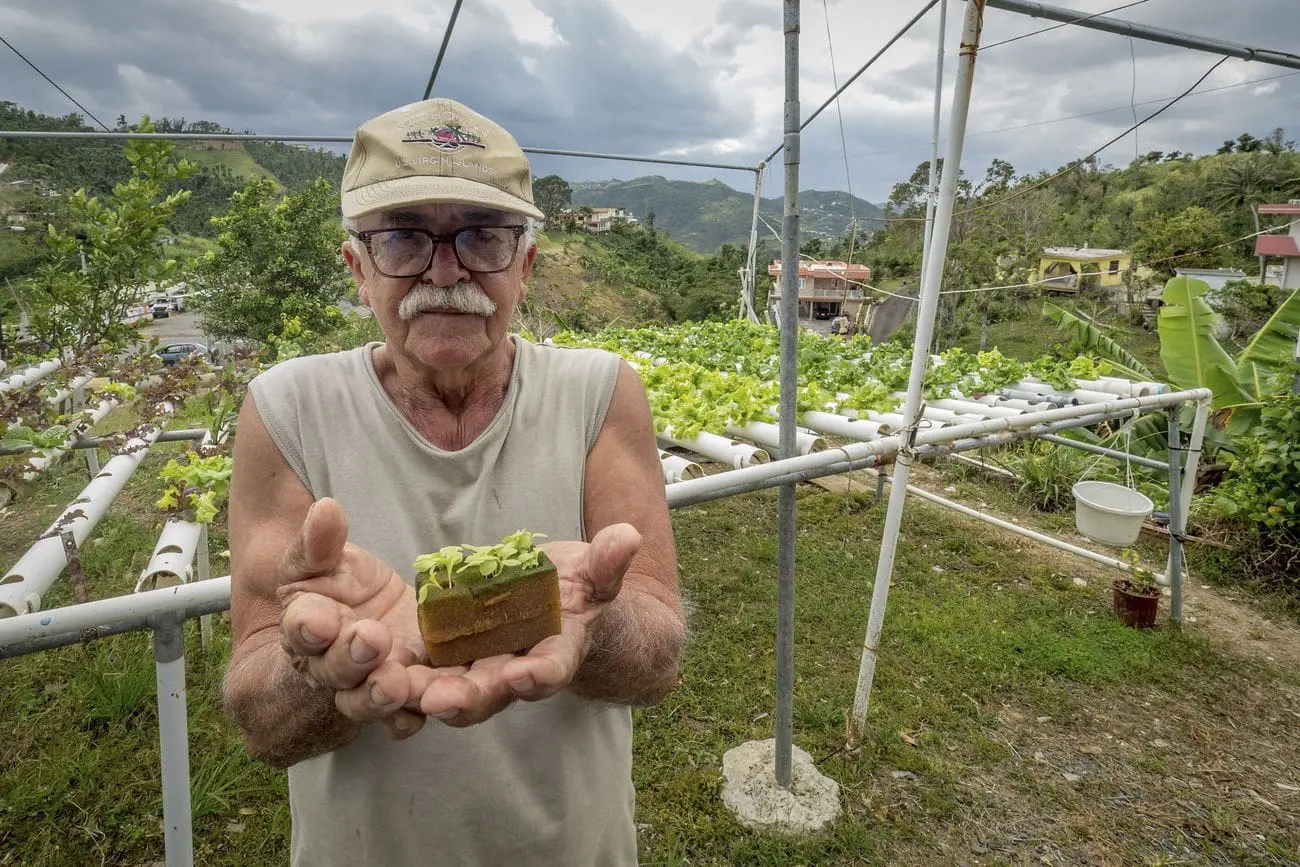
Inside a solar power and hydroponic station in Tongogara Refugee Camp (TRC) in southeastern Zimbabwe, Francine Mashimango grows thousands of fruit and veg.
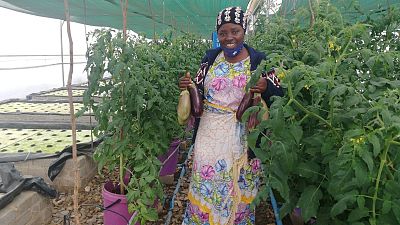
She is looking at a month-outdated lettuce grown in a deep water culture system of hydroponics, with a white dress and a black jersey to protect herself from the brutal June cold,.
The single mother of eight children run away from the conflict in the Democratic Republic of Congo in 2018.
The police in Zambia arrested Francine with her children for breaking immigration laws in Binga in ZimbabweSo she found refuge at TRC in Chipinge district. .
says Mashimango in Swahili.
Mashimango, a smallholder farmer in DRC, tried to establish a backyard garden at her home in the camp but with no triumph as water is nearly a kilometre away.
In November 2021, she became one of the pioneer smallholder farmers in a solar power and hydroponic station established by World Vision Zimbabwe.
WVZ is a humanitarian organisation with funding from the UN World Food Programme (WFP).
What is solar power and hydroponic?
Hydroponics, a soilless cultivation technique that enables plant growth in arid areas or in urban areas, uses up to 90 per cent less water and 75 per cent less space than conventional farming.
two times faster, according to an WFP expert.
At TRC there are about 70 farmers who grow various vegetables and fruits such as tomatoes, cucumbers and lettuce in greenhouses in an area the size of a football input powered by solar energy.
They apply two types of hydroponics systems including the deep water culture (DWC) and the drip system also known as the Dutch bucket system.
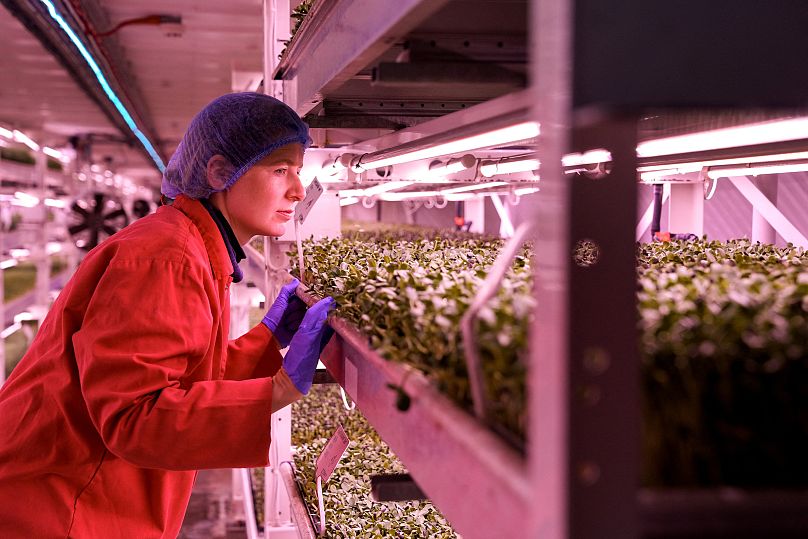
The plant grows in a pot filled with a few clay pebbles. The roots immersed in a water-based mineral fix are constantly oxygenated by an air pump.”
explains a World Food Programme official.
The Dutch bucket system, the official adds, uses two or more growing containers connected to the same irrigation and drainage lines that provide oxygenation and nutrients.
The leftover fix then flows return into the reservoir for reuse.
I utilize the time elsewhere.
Francine Mashimango
A mother of eight and refugee who fled the conflict in DRC.
Mashimango, who is part of the organization doing routine check-ups every morning, says the hydroponic technique requires less labour.
We rarely do anything here. “I do not have to carry buckets on top of my head to water the plant. I utilize the time elsewhere.”
says Mashimango cracking jokes in her mother tongue Swahili
How productive is solar power and hydroponics?
The hydroponic project at TRC has a capacity to produce about 11,800 heads of lettuce and 500 cucumber plants in one harvesting cycle in the five greenhouses, according to the WFP.
“Hydroponics is a potentially useful tool to overcome some of the challenges of traditional agriculture in the face of freshwater shortages
Louis Muhigirwa, a deputy Food and Agriculture Organisation representative in Zimbabwe
What happens on cloudy days?
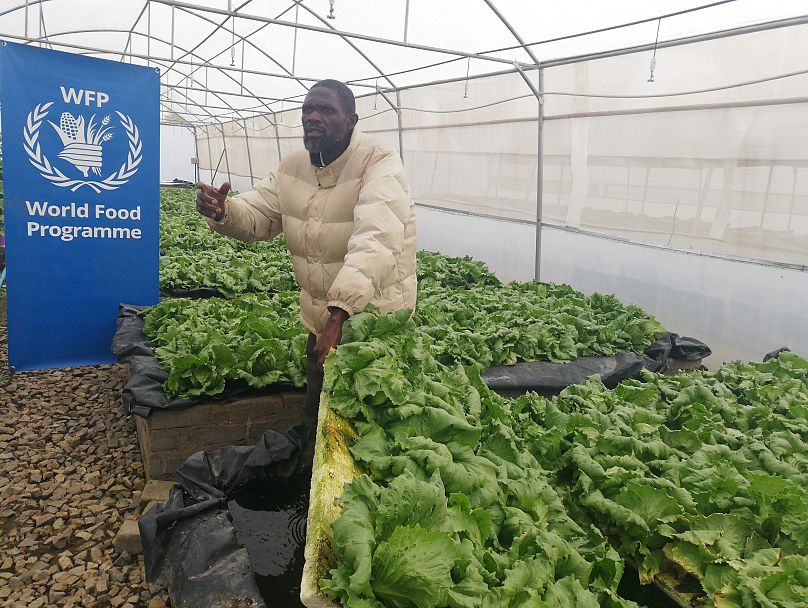
The system needs constant power to control the temperature in the greenhouse. Both systems at TRC require power to keep on supplying oxygen and nutrients to the plants.
Solar panels charge batteries that pump water from underground to tanks and to the hydroponics system in the greenhouse.
“When it is cloudy the system shuts down after the batteries run out of power,”
says Peter Banzvi Chakaamba, 48, who arrived in TRC four years ago after fleeing conflict in neighbouring Mozambique.
To not run out of power during cloudy days they need more solar panels and better storage.
Muhigirwa adds that some types of hydroponic systems also require a continuous and reliable power supply, as plant roots can dry out quickly if pumps or sprays fail.
From growing veg to striking deals: Where does the hydroponics produce go?
The smallholder farmers supply their produce to top retail outlets in Chipinge town and markets within the TRC.
“We teach the farmers continuously about niche connections.”
A WFP official says
Tweet
I apply the money to acquire clothes for my family” “After selling the products we send the cash equally.
Mashimango says
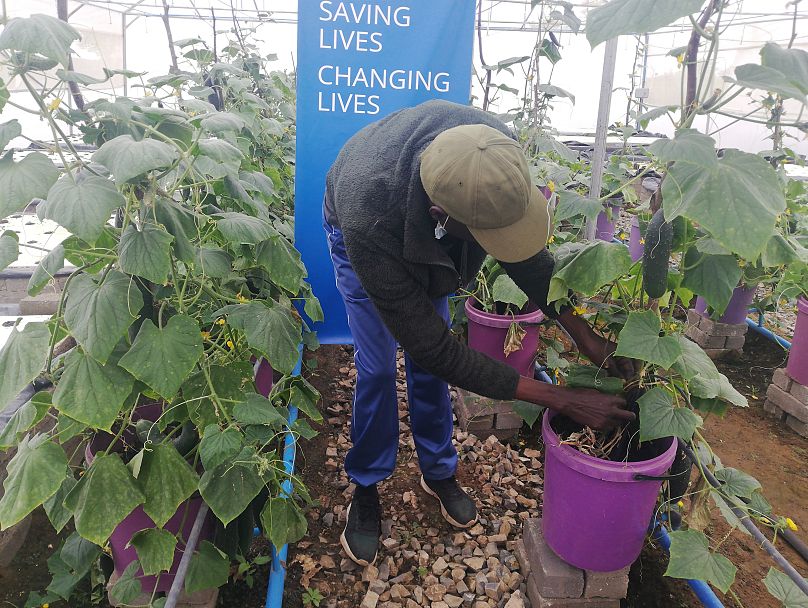
“At one time we had so many vegetables
Ilanga Kabongo the 44-year-old, who fled from rebels trying to force him to join the war in DRC in 2015, says.
The smallholder farmers take some vegetables for family consumption in their homes, once every week, he added.
Hydroponics could be a ‘climate alter buster’
“The cost of a profitable hydroponics to delivers at a local rural scale needs to be explored. If going to be measured against economic considerations, any investment will need to be supported technically and financially.”
Paul Zakariya, Zimbabwe Farmers Union executive director, says
We need hydroponics technologies to promote high levels of productivity without needing a large piece of land.
Lands Ministry permanent secretary John Bhasera says

“We need such technologies to still promote high levels of productivity without necessarily needing a large piece of land. This may be a climate modify buster targeting urban areas and rural areas.”
Ministry of Lands, Agriculture, Fisheries, Water and Rural Resettlement says
The government will be targeting household nutrition and household income, he says.
Meanwhile, Mashimango dreams of one day owning a farm to venture into farming full-time.
“I hope to own a piece of land and I will use the skills and knowledge gained in this hydroponics project to grow vegetables on a large scale”
she says
Why Mondosol?
Mondosol has been freely sharing knowledge since 2011 and is committed to making their programs accessible on multiple devices. Generous donations keep their projects gratis, and they invite involvement in their mission to assist launch online businesses, improve skills, or develop a positive global impact through practical courses, discussions, and video material.
Support Mondosol
From the article
Stay up to date with the latest from our blog.
Unlock Your Story: The Power of Professional Ghost Writing Services 🖋️
Busy executives and thought leaders often rely on ghostwriters to produce exceptional content efficiently. Ghostwriting services enhance personal and business brands through polished writing in…
Tech Writing Services: The Ultimate Guide for 2025 and Beyond
The demand for technical writing services is rising in the digital age, driven by the need for clear communication of complex information. By 2025, increase…
Understanding the Quarters of the Year
📅 Confused about fiscal years worldwide? 🌍 Quick guide to 4 main fiscal year starts: Jan 1, Apr 1, Jul 1, & special dates ➡️…
Elevate Your Video Content: Exciting Trends and Music Ideas for 2025 🎶
Explore innovative video background music ideas and trends for 2025 to enhance viewer engagement. Key genres like Afrohouse and Amapiano, lo-fi beats, and hybrid orchestral…


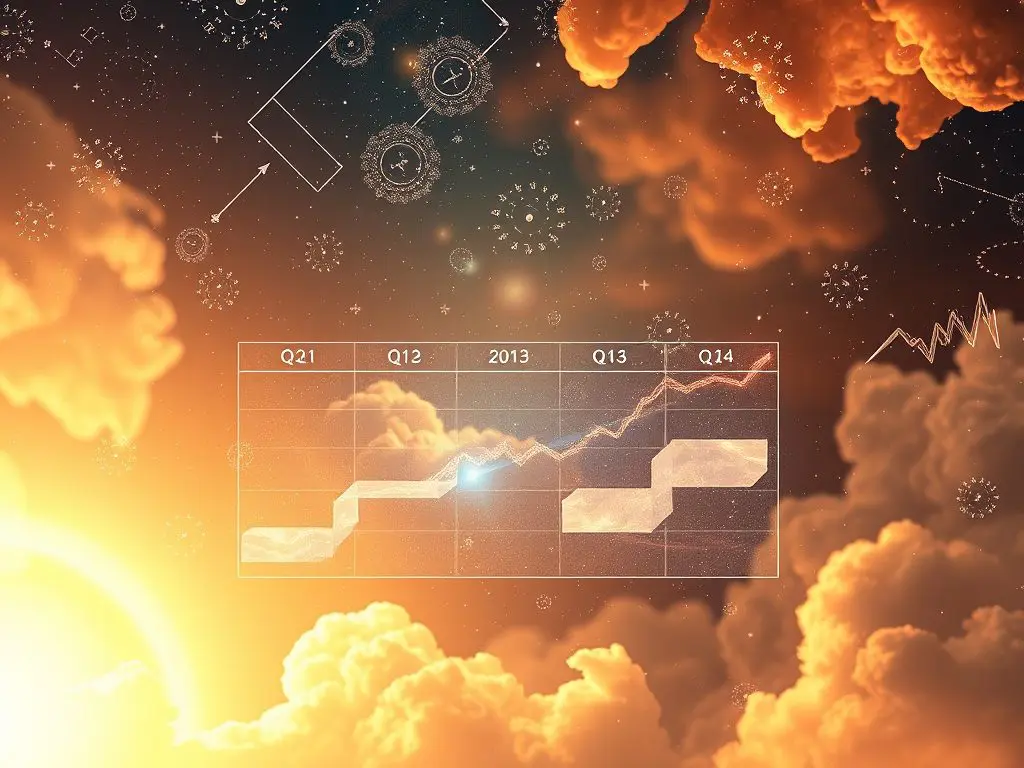



Leave a Reply